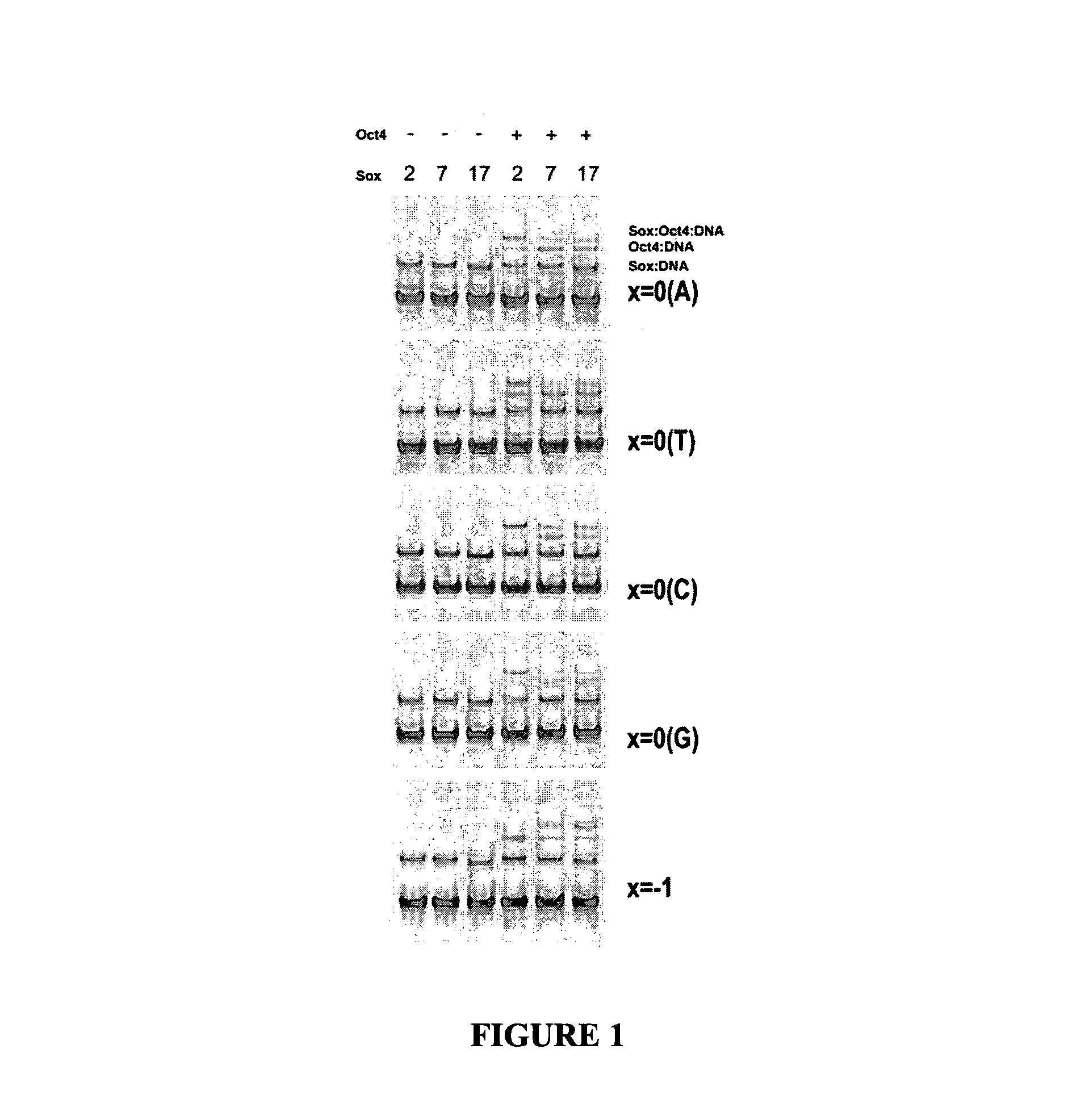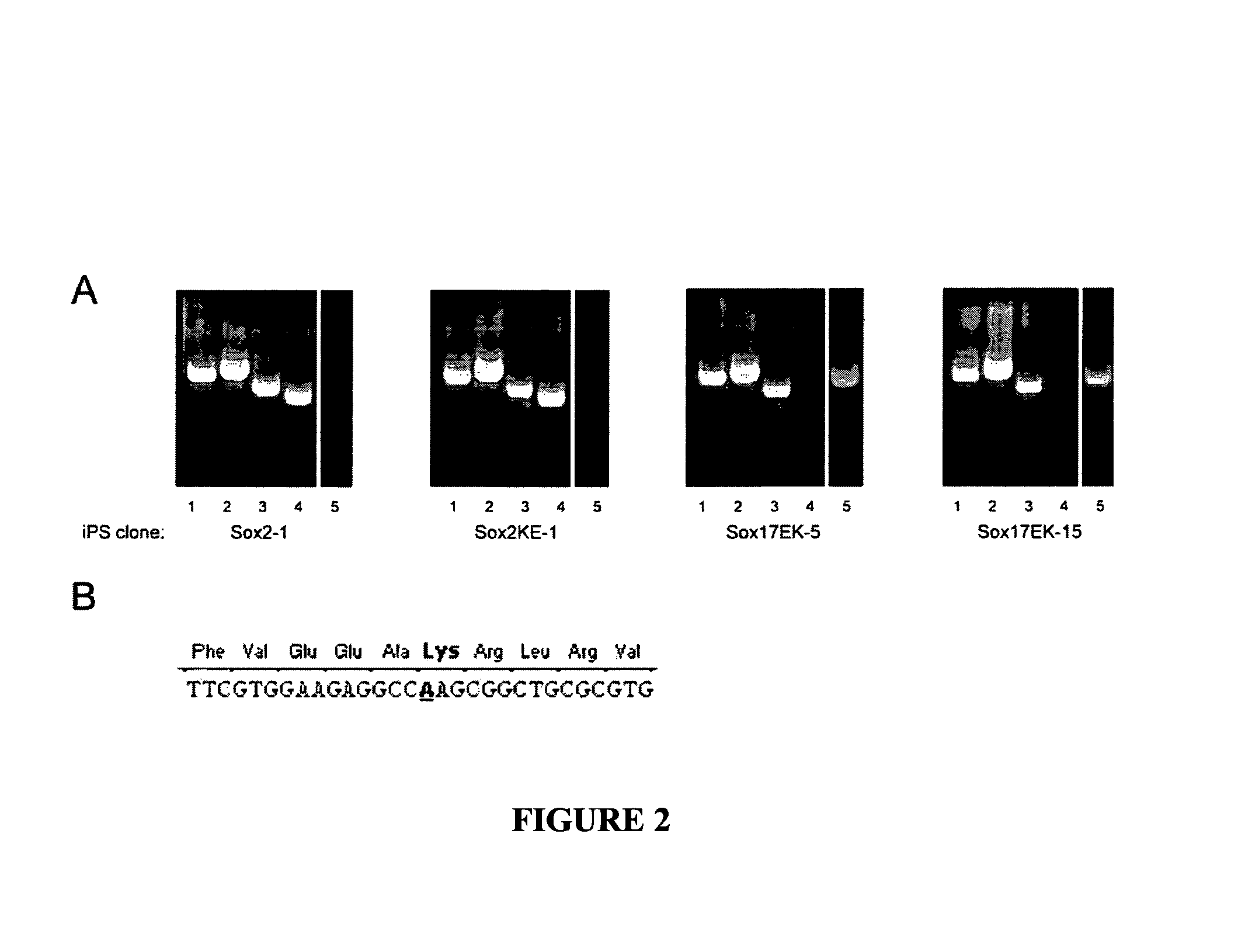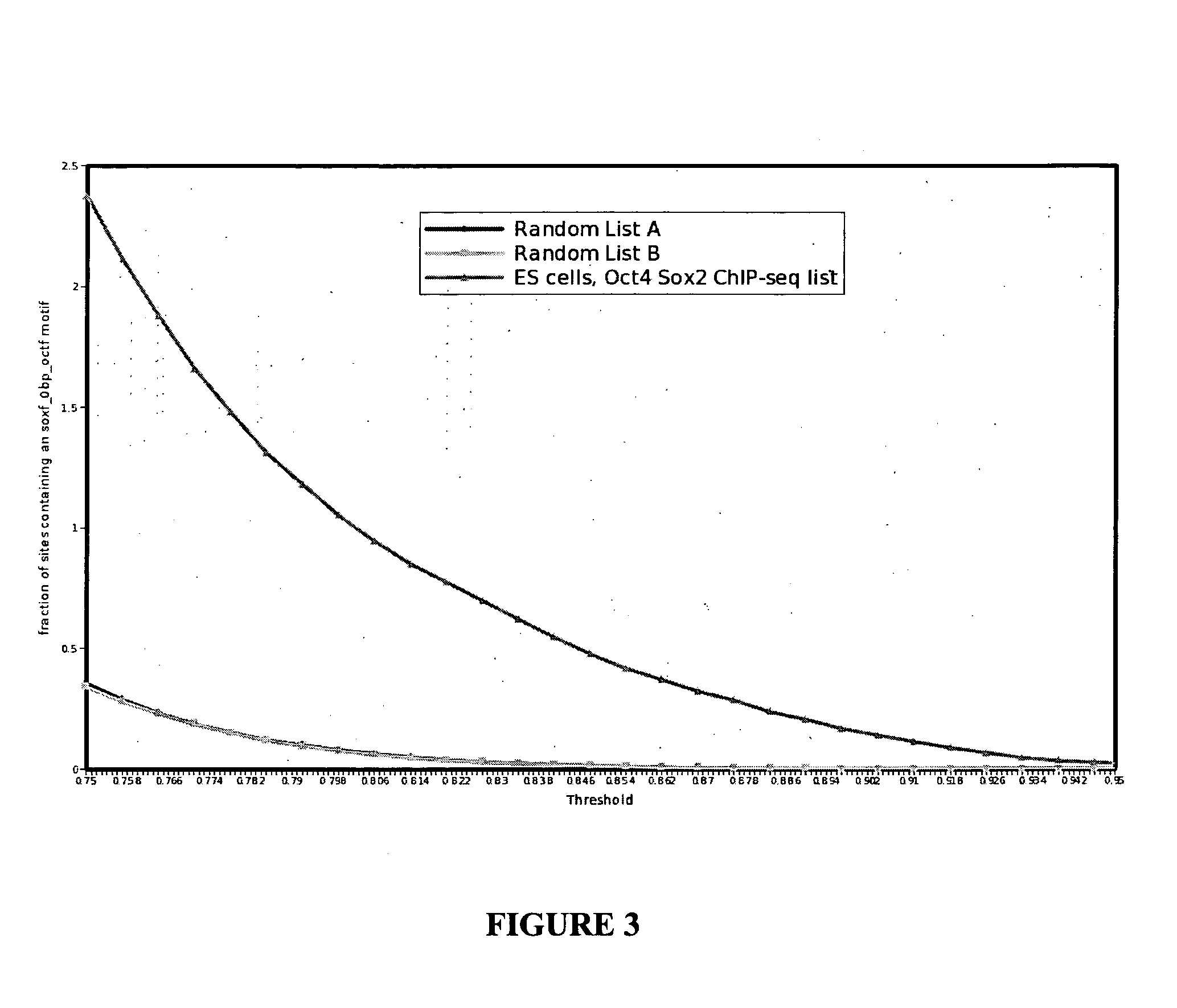Mutant sox proteins and methods of inducing pluripotency
a technology of sox proteins and pluripotency, applied in foreign genetic material cells, plant cells, sugar derivatives, etc., can solve the problems of unexplained biochemical uniqueness of sox proteins, achieve reprogramming, induce pluripotency, and enhance cooperative interaction
- Summary
- Abstract
- Description
- Claims
- Application Information
AI Technical Summary
Benefits of technology
Problems solved by technology
Method used
Image
Examples
example 1
[0081]The role of the Sox2 / Oct4 pair as an inducer of pluripotency is well established (Nichols, Cell (1998) 95:379-91; Rodda, D. J. et al. J Biol Chem (2005) 280:24731-7) and there is evidence that Sox17 and Oct4 functionally cooperate during endodermal differentiation (Reim, G., et al. Dev Cell (2004) 6:91-101; Stefanovic, S. et al. J Cell Biol (2009) 186: 665-73).
[0082]It is therefore conceivable that Sox2 and Sox17 can compete for Oct4 and form stable complexes on specific genomic regions characterized by distinct cis-regulatory motifs.
[0083]To test this, experiments were designed to identify variant sox / oct motif configurations in genomic regions occupied by Sox2 and Oct4 in mouse ES cells (Chen, X. et al., Cell (2008) 133: 1106-1117), the results of which experiments identified a novel compressed element. In vitro heterodimerization assays, however, revealed that only Sox17 / Oct4 but not Sox2 / Oct4 was able to co-bind this element while the Sox2 / Oct4 complex predominates on the ...
example 2
[0139]Sox7 was mutated at the corresponding Glu residue in a similar fashion to Sox17 as described in Example 1 to produce a Sox7EK mutant. Sox7EK was able to induce pluripotency, in contrast to analogous mutant forms of Sox4, Sox5 and Sox13 (FIG. 12A, 12B). Colonies were visible at least as early as day 14 (FIG. 13). As with Sox17, wildtype Sox7 did not induce pluripotent colonies, but Sox7EK was more efficient than Sox2 (wildtype) at producing pluripotent colonies (FIG. 14A, 14B).
[0140]FIG. 12: Results of induced pluripotency using OCK alone or with Sox2 or mutants of Sox4, Sox5, Sox13 or Sox7. A. GFP fluroescence. B. Alkaline phosphatase staining.
[0141]FIG. 13: Pluripotent colonies induced by Sox7EK. Colonies were visible as early as day 14.
[0142]FIG. 14: Efficiency of induction of pluripotency. A. Wildtype Sox2 and Sox7EK were able to induce pluripotency whereas Sox2KE and Sox7 wildtype did not. B. As with Sox17EK, Sox7EK is more efficient at inducing pluripotency when compared ...
example 3
[0146]There is a high homology between human and mouse transcription factors. The HMG domain is 100% conserved between the two species.
[0147]Human induced pluripotent stem (iPS) cells can be generated by viral transduction of human adipose-tissue derived mesenchymal stem cells (hAd-MSCs) (Sun, N. et al., Proc Natl Acad Sci USA (2009) 106:15720-725) with the four “Yamanaka factors”: OCT4, SOX2, KLF4 and c-MYC (Takahashi and Yamanaka (2006) Cell 126:663-676). The detailed protocol is as follows.
[0148]For virus production, pMXs retroviral vectors are used in which the cDNA sequences of Oct4, c-Myc, Klf4, Sox2, Sox2KE, Sox7, Sox7EK, Sox17 and Sox17EK were cloned. 20×106 of virus-producing 293GP2 cells are plated in a 15 cm dish and transfected the next day by using Fugene6 transfection reagent. 112.5 μl of Fugene are mixed with 750 μl of DMEM for 5 minutes. Then 22.5 μg of pMXs vector and 22.5 μg of a VSV-G vector are added drop by drop. 15 minutes later the mix is transferred onto the ...
PUM
| Property | Measurement | Unit |
|---|---|---|
| motif threshold | aaaaa | aaaaa |
| motif threshold | aaaaa | aaaaa |
| volume | aaaaa | aaaaa |
Abstract
Description
Claims
Application Information
 Login to View More
Login to View More - R&D
- Intellectual Property
- Life Sciences
- Materials
- Tech Scout
- Unparalleled Data Quality
- Higher Quality Content
- 60% Fewer Hallucinations
Browse by: Latest US Patents, China's latest patents, Technical Efficacy Thesaurus, Application Domain, Technology Topic, Popular Technical Reports.
© 2025 PatSnap. All rights reserved.Legal|Privacy policy|Modern Slavery Act Transparency Statement|Sitemap|About US| Contact US: help@patsnap.com



